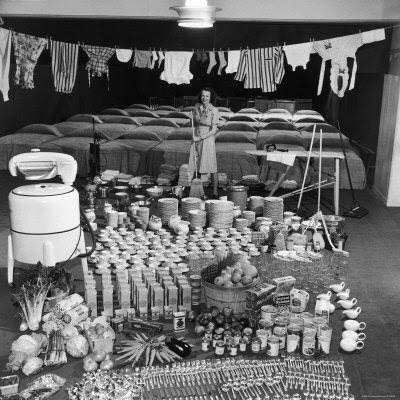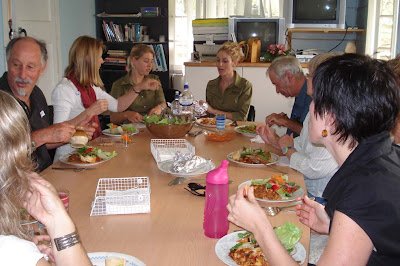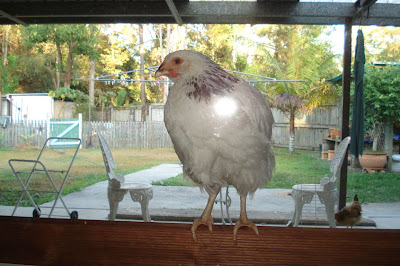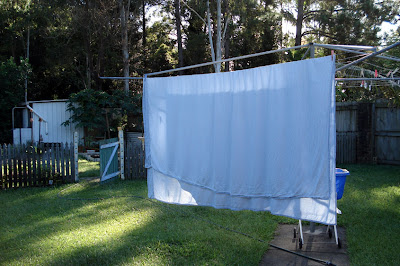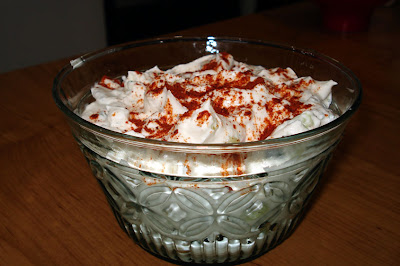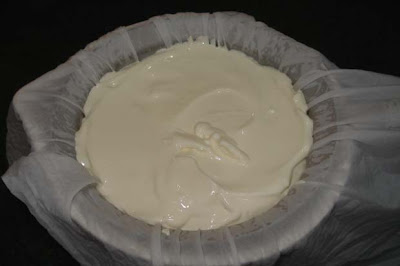I'm happy to report that it all went very well with Hanno's surgery yesterday. He went in at 1pm, I popped down to Spotlight to check out a sale then spent a couple of hours in the waiting room, knitting, and he hobbled out at 5.30pm. We got home around 6pm. He had no pain, didn't need crutches and he slept fairly well last night. Today and tomorrow will be the test, the doctor said he must allow the knee to heal but he also needs to exercise it. His idea of rest, and mine, are entirely different so we'll see what happens today. My guess is he'll sit on the couch and on the front verandah until he reads everything he wants to read, then he'll want to wander around. Thank you all for your kind thoughts and prayers.
I was going to write about biscuits today but that can wait for another time because I'm going to carry on from yesterday. My post on "perfection" seemed to hit a cord with a few of you so let's expand on that.
I was saddened to read some of yesterday's comments. I know it's difficult to overcome something you've live with in childhood but as adults we have the choice to live as we wish. Examine your fears, think about what you believe perfection to be and develop the strength to toss out old ideas and work on new ones. Oh, and examine your fears in the bright light of day, not at 3am lying silently in the darkness when everything seems hopeless. If trying to be perfect just isn't working for you then replace that need with doing your best.
When elite athletes train for the Olympics they don't try to beat world records, they try to beat their own personal best. And that is a helpful tactic here too. Just do your best on any given day, you can't ask for more than that. I know that as I go through my week, some days I feel I can take on the world, and some days I just want to write, drink tea and rest. NO ONE, has the capacity to work perfectly every day. Not every day will be perfect - in fact very few are.
If you're expecting perfection you're setting yourself up for disappointment. You're hoping for something that rarely happens. Don't do that to yourself. Instead, today, this very minute, say to yourself that you're replacing the expectation of perfection with doing your best. And in the days that follow this one, try your best in every thing you do. Slow down and concentrate on what it is you're doing - don't rush through your work trying to get it done - and do your best. Some days your best will be spectacular and some days it won't be but as long as you can go to bed each day thinking that you did the best you could do on that day, that will stand you in good stead. Hopefully over the course of a few months, you'll replace your mother's voice in your head, insisting on perfection, with: I'm proud that I did the best I could.
I have touched on this subject before here: The best
I hope today is a good one for you and that whatever you do, you'll do your best and be happy with it. And remember, happiness is not one huge reward you find one day. It's tiny fragments that are collected every day and added to your basket. Never stop looking for whatever happiness you can find. It maybe in the passage of a book, it may be lurking in your garden or on the faces of your children. Take note of every happy moment, add them to your basket and be enriched by the thought of them as you go through your day.
I was going to write about biscuits today but that can wait for another time because I'm going to carry on from yesterday. My post on "perfection" seemed to hit a cord with a few of you so let's expand on that.
I was saddened to read some of yesterday's comments. I know it's difficult to overcome something you've live with in childhood but as adults we have the choice to live as we wish. Examine your fears, think about what you believe perfection to be and develop the strength to toss out old ideas and work on new ones. Oh, and examine your fears in the bright light of day, not at 3am lying silently in the darkness when everything seems hopeless. If trying to be perfect just isn't working for you then replace that need with doing your best.
When elite athletes train for the Olympics they don't try to beat world records, they try to beat their own personal best. And that is a helpful tactic here too. Just do your best on any given day, you can't ask for more than that. I know that as I go through my week, some days I feel I can take on the world, and some days I just want to write, drink tea and rest. NO ONE, has the capacity to work perfectly every day. Not every day will be perfect - in fact very few are.
If you're expecting perfection you're setting yourself up for disappointment. You're hoping for something that rarely happens. Don't do that to yourself. Instead, today, this very minute, say to yourself that you're replacing the expectation of perfection with doing your best. And in the days that follow this one, try your best in every thing you do. Slow down and concentrate on what it is you're doing - don't rush through your work trying to get it done - and do your best. Some days your best will be spectacular and some days it won't be but as long as you can go to bed each day thinking that you did the best you could do on that day, that will stand you in good stead. Hopefully over the course of a few months, you'll replace your mother's voice in your head, insisting on perfection, with: I'm proud that I did the best I could.
I have touched on this subject before here: The best
I hope today is a good one for you and that whatever you do, you'll do your best and be happy with it. And remember, happiness is not one huge reward you find one day. It's tiny fragments that are collected every day and added to your basket. Never stop looking for whatever happiness you can find. It maybe in the passage of a book, it may be lurking in your garden or on the faces of your children. Take note of every happy moment, add them to your basket and be enriched by the thought of them as you go through your day.

